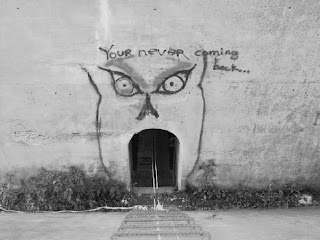Jeffrey Keedy’s
Graphic Design in the Postmodern Era was intriguing for me. As someone who has never been educated on the friction of modern versus postmodern, I found it eye-opening—eye-opening as it pertains to my experience in mass communications, and how little I truly learned—history-wise and theory-wise, and I wonder if it is a generational thing. Keedy says, “With all the confusion in these early days of formulating theoretical paradigms, it is understandable why some designers have given up trying to connect their practice to contemporary theory.”
The first thought that enters my mind is a reflection—a reflection of what my graphic design courses included. There was no history. There was not theory. It was merely instruction, lessons on chromatics and page layout. This is Adobe Photoshop. This is what the magic wand does. This is Adobe Illustrator. There were no lessons on types or anything. After reading this, I almost feel robbed, as though I missed some incredibly important things—not because of class time constraints or the level of the course, but perhaps because those in the field who taught me didn’t believe in correlating practice with theory.
In terms of the postmodern era, I feel as though Keedy’s interpretation of postmodernism as it relates to graphic design is the constant need for relevance, and the arms race for technology. As Keedy says...”Today's young designers don't worry about selling out, or having to work for "the man," a conceit almost no one can afford anymore. Now everyone wants to be "the man." What is left of an avant-garde in graphic design isn't about resistance, cultural critique, or experimenting with meaning. Now the avant-garde only consists of technological mastery: who is using the coolest bit of code or getting the most out of their HTML this week.”
Keedy goes on to say,” Graphic designers are caught up in a media stream that is very wide and fast, but not very deep. The only way to navigate in it is to go faster or slower than the stream. To go faster you must be at the forefront of technology and fashion, both of which are changing at an unprecedented rate.”
I think it’s incredibly important to note that Keedy’s article is from 1998, which I believe, makes it just as interesting to read. Though only 12 years old, technology has changed—so much in our world has changed, and in graphic design, it’s obviously no different. From a critical standpoint, we should consider what the internet has done. It has opened unprecedented doors for everyone with access. Anyone can write and publish online. Keedy nearly sounds like he is predicting the future when he says, “Perhaps the Internet will simply co-opt graphic design, incorporating it into its operating system. Maybe graphic design will cease to exist as a discreet practice and just become another set of options on the menu.” Anyone can film and upload online. Anyone can create music and perform online. Anyone can design a graphic and post online. Artistry has changed dramatically because of the internet.
So the landscape has changed completely, and with that being said, does it change Keedy’s idea of what postmodern graphic designs stand for? Keedy mentions how the design of the 80’s devolved into the “ugly, grunge, layered, chaotic, postmodern design of the 90s. This devolution resulted in “one-style-fits-all commercial signifier for everything that is youth, alternative, sports, and entertainment-oriented.” As Keedy kindly put it, the "official style of the hip and cool"
My final interest of Keedy’s piece included the overall outlook or impression of graphic artists and their work. Keedy says, “Looking at much of today's graphic design one would have to conclude that graphic designers are twelve-year-olds with an attention deficit disorder. Designers today are representing our present era as if they were using a kaleidoscope to do it. Or more precisely, a constantly mutating digital collage machine, filled with a bunch of old "sampled" parts from the past, and decorated with special effects. Ultimately what we are left with is a feeling of aggravated and ironic nostalgia.”
My reaction to this statement is that of disagreement. I feel technology has bestowed upon designers a new set of tools, and a slew of new ideas to use. So my question to you, is this: Is Keedy right? Is graphic design today a constantly recycled kaleidoscope of the past? Do we see anything new in advertising, or is it what we’ve seen so many times over?
















 Lynda Barry’s
Lynda Barry’s 











